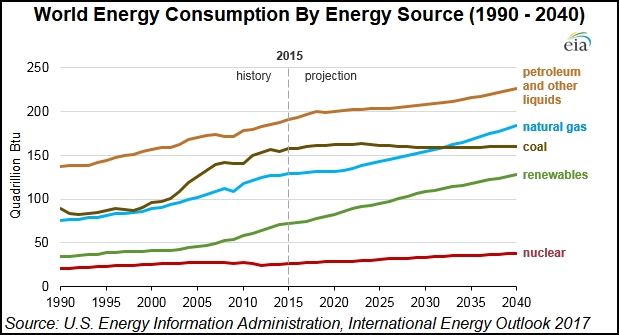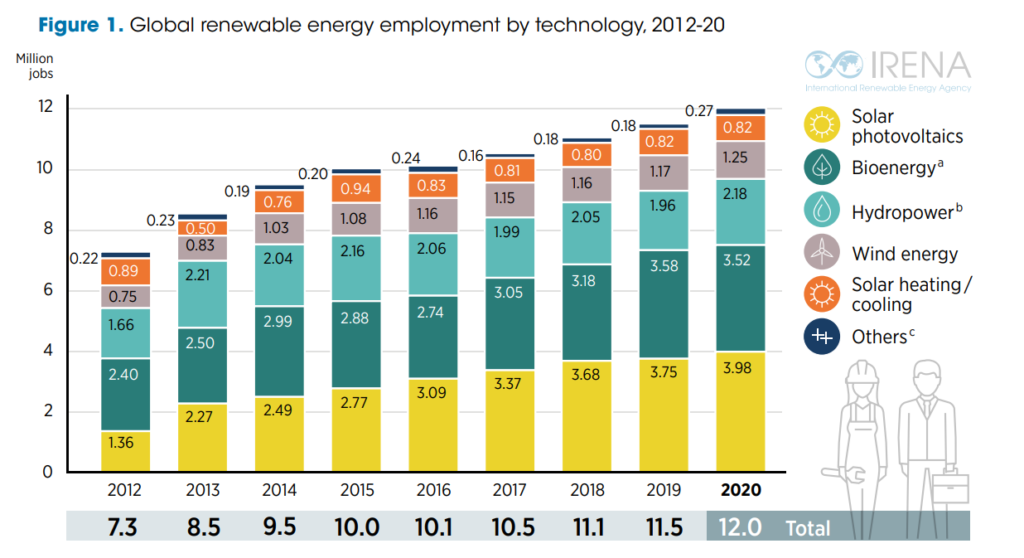How the Oil and Gas Sector Can Drive Renewable Energy Growth
Source: Getty Images
27 January 2022 – by Eric Koons
The oil and gas sector is in decline, and the renewable energy transition is no longer an idea discussed in the halls of think tanks or academia – it is happening now. In other words, clean energy will only accelerate in the global economy as the world moves towards its net-zero goals.
The fossil fuel industry continues to oppose the rolling out of clean energy policies. One of the arguments often used to discourage their adoption is the fate of the sector’s workforce working in the crude oil production and gas production companies. As of 2021, the energy sector employs 18 million people globally. However, 12.6 million jobs are in the oil, gas, and coal industries. With the rise of renewables, what does the future hold for workers in fossil fuels?
A Future for Oil and Gas Industry Workers
In countries heavily reliant on fossil fuels, whether as consumers, oil and gas producers, or industrial hubs, the prospect of mass layoffs is unappealing. Gas and oil industry jobs will sink dramatically in the coming years, yet the energy sector will expand.

Projections show that there could be 26 million people working in the energy industry by 2050, 8 million more than today. Consequently, environmental economists predict that manufacturing and installing renewable energy sources could account for one-third of those jobs. Yet, this increase in jobs driven entirely by the implementation of renewable energy will need oil and gas sector workers.
“Coal miners and oil workers are skilled technical workers already familiar with operating complex machinery and equipment safely. That technological expertise, plus their aptitude for mechanical work and their additional relevant skills, primes these workers to succeed in solar and wind energy jobs,” points out utility provider Clean Choice Energy. “In fact, renewable energy companies are already recruiting coal miners based on their work ethic and technical and mechanical skills.”
Indeed, analysts are bullish at the prospect of using the skills and experience of fossil fuel workers for renewable energy. There are many overlapping skills between oil, gas, and clean energy workers at all levels. As a result, reskilling or retraining is already occurring across the industry. In some instances, fossil fuel workers demand training opportunities to become attractive candidates for renewables positions.
Opportunities for Oil and Gas Companies Workers in Asia
As previously mentioned, Asia is home to some of the world’s largest oil and gas industries. The region’s current transition towards renewable energy has raised questions about how countries like Indonesia or Malaysia can survive economically without the investments made into, and by, fossil fuel companies.
Larger powers like China also have a significant stake in oil and gas, yet they have started to embrace renewables. The entire region is about to experience considerable growth in renewable energy. This could provide many opportunities for the oil and gas sector to turn around, reuse its workforce, and grow economically.

Renewable Energy Jobs Represent More Long Term Stability Than Oil and Natural Gas Sector
Above all, the renewable energy sector provides more stability and security than oil and gas. In an article in Clean Technica, writer Carolyn Fortuna sees vast growth potential for renewables in a world where clean energy is becoming paramount.
“Job growth in renewable energy has been steadily growing for a decade. Given the demand ahead of us as we transition to a zero-carbon grid, this growth [will] continue,” writes Fortuna. “Renewable energy jobs have a steadier growth trajectory, particularly compared to the more volatile boom and bust cycles seen in oil and gas. In contrast, jobs in the oil and gas sector are highly volatile. Every time the price of oil drops, jobs are at risk of being eliminated.”
The opportunities in Asia already exist, and the Covid-19 pandemic helped many realise the importance of renewables on the grid. With almost a quarter of global fossil-fuel positions based in Asia, and the region’s growing demand for sustainable energy sources, there are ample opportunities for oil and gas sector workers to transition into renewables.
Fittingly, Asia has an opportunity to be ahead of the curve and position itself as a leader in renewable energy. The region could create a blueprint for putting the fossil fuel industry aside without sacrificing the workers who rely on it.

by Eric Koons
Eric is a passionate environmental advocate that believes renewable energy is a key piece in meeting the world’s growing energy demands. He received an environmental science degree from the University of California and has worked to promote environmentally and socially sustainable practices since. Eric’s expertise extends across the environmental field, yet he maintains a strong focus on renewable energy. His work has been featured by leading environmental organizations, such as World Resources Institute and Hitachi ABB Power Grids.
Read more